The NVIDIA GeForce GTX 780 Ti Review
by Ryan Smith on November 7, 2013 9:01 AM ESTHands On With NVIDIA's Shadowplay
Though it’s technically not part of the GeForce GTX 780 Ti launch, before diving into our typical collection of benchmarks we wanted to spend a bit of time looking at NVIDIA’s recently released Shadowplay utility.
Shadowplay was coincidentally enough first announced back at the launch of the GTX 780. Its designed purpose was to offer advanced game recording capabilities beyond what traditional tools like FRAPS could offer by leveraging NVIDIA image capture and video encode hardware. In doing so, Shadowplay would be able to offer similar capabilities with much less overhead, all the while also being able to utilize the NVENC hardware H.264 encoder to encode to space efficient H.264 rather than the bulky uncompressed formats traditional tools offer.
With Shadowplay and NVIDIA’s SHIELD streaming capabilities sharing so much of the underlying technology, the original plan was to launch Shadowplay in beta form shortly after SHIELD launched, however Shadowplay ended up being delayed, ultimately not getting its beta release until last week (October 28th). NVIDIA has never offered a full accounting for the delay, but one of the most significant reasons was because they were unsatisfied with their original video container choice, M2TS. M2TS containers, though industry standard and well suited for this use, have limited compatibility, with Windows Media Player in particular being a thorn in NVIDIA’s side. As such NVIDIA held back Shadowplay in order to convert it over to using MP4 containers, which have a very high compatibility rate at the cost of requiring some additional work on NVIDIA’s part.
In any case with the container issue resolved Shadowplay is finally out in beta, giving us our first chance to try out NVIDIA’s game recording utility. To that end while clearly still a beta and in need of further polishing and some feature refinements, at its most basic level we’ve come away impressed with Shadowplay, with NVIDIA having delivered on all of their earlier core promises for the utility
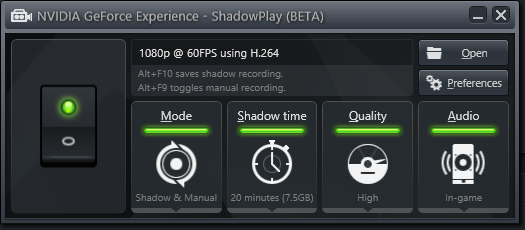
With regards to functionality, all of Shadowplay’s basic functionality is in. The utility offers two recording modes: a manual mode and a shadow mode, the former being self-explanatory while the latter being an always-active rolling buffer of up to 20 minutes that allows saving the buffer after the fact in a DVR-like fashion. Saving the shadow buffer causes the entirety of the buffer to be saved and a new buffer started, while manual mode can be started and stopped as desired.
| Shadowplay Average Bitrates | |||
| High Quality | 52Mbps | ||
| Medium Quality |
23Mbps
|
||
| Low Quality |
16Mbps
|
||
Next to being able to control the size of the shadow buffer, Shadowplay’s other piece of significant flexibility comes through the ability to set the quality (and therefore file size) of the recordings Shadowplay generates. Since Shadowplay uses lossy H.264 the recording bitrates will scale with the quality, with Shadowplay offering 3 quality levels: high (52Mbps), medium (23Mbps), and low (16Mbps). Choosing between the quality levels will depend on the quality needed and what the recording is intended for, due to the large difference in quality and size. High quality is as close as Shadowplay gets to transparent compression, and with its large file sizes is best suited for further processing/transcoding. Otherwise Medium and Low are low enough bitrates that they’re reasonably suitable for distribution as-is, however there is a distinct quality tradeoff in using these modes.
Moving on, at this moment while Shadowplay offers a range of quality settings for recording it only offers a single resolution and framerate: 1080p at 60fps. Neither the frame rate nor the resolution is currently adjustable, so whenever you record and despite the resolution you record from, it will be resized to 1920x1080 and recorded at 60fps. This unfortunately is an aspect-ratio unaware resize too, so even non-16:9 resolutions such as 1920x1200 or 2560x1600 will be resized to 1080p. Consequently at this time this is really the only weak point for Shadowplay; while the NVENC encoder undoubtedly presents some limitations, the inability to record at just a lower resolution or in an aspect ratio compliant manner is something we’d like to see NVIDIA expand upon in the final version of the utility.
Finally, let’s talk about performance. One of Shadowplay’s promises was that the overhead from recording would be very low – after all, it needs to be low enough to make always-on shadow mode viable – and this is another area where the product lives up to NVIDIA’s claims. To be sure there’s still some performance degradation from enabling Shadowplay, about 5% by our numbers, but this is small enough that it should be tolerable. Furthermore Shadowplay doesn’t require capping the framerate like FRAPS does, so it’s possible to use Shadowplay and still maintain framerates over 60fps. Though as to be expected, this will introduce some frame skipping in the captured video, since Shadowplay will have to skip some frames to keep within its framerate limitations.
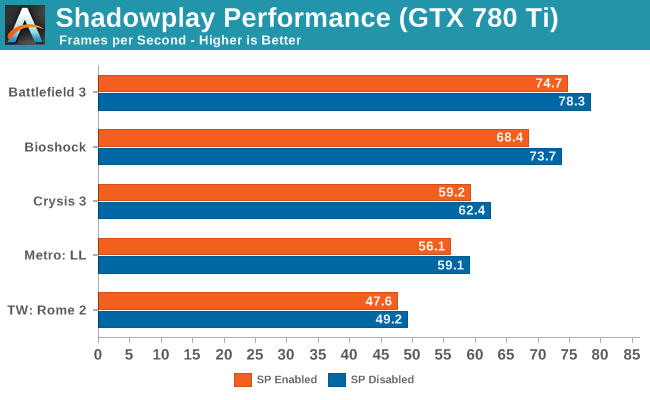
On a related note, we did some digging for a technical answer for why Shadowplay performs as well as it does, and found our answer in an excellent summary of Shadowplay by Alexey Nicolaychuk, the author of RivaTuner and its derivatives (MSI Afterburner and EVGA Precision). As it turns out, although the NVENC video encoder plays a part in that – compressing the resulting video and making the resulting stream much easier to send back to the host and store – that’s only part of the story. The rest of Shadowplay’s low overhead comes from the fact that NVIDIA also has specific hardware and API support for the fast capture of frames built into Kepler GPUs. This functionality was originally intended to facilitate GRID and game streaming, which can also be utilized for game recording (after all, what is game recording but game streaming to a file instead of another client?).
This functionality is exposed as Frame Buffer Capture (NVFBC) and Inband Frame Readback (NVIFR). NVFBC allows Shadowplay to pull finished frames straight out of the frame buffer directly at a low level, as opposed to having to traverse the graphics APIs at a high level. Meanwhile NVIFR does have operate at a slightly higher level to inject itself into the graphics API, but in doing so it gains the flexibility to capture images from render targets as opposed to just frame buffers. Based on what we’re seeing we believe that NVIDIA is using NVFBC for Shadowplay, which would be the lowest overhead option while also explaining why Shadowplay can only capture full screen games and not windowed mode games, as frame buffer capturing is only viable when a game has exclusive control over the frame buffer.
Wrapping things up, it’s clear that NVIDIA still has some polishing they can apply to Shadowplay, and while they aren’t talking about the final release this soon, as a point of reference it took about 4 months for NVIDIA’s SHIELD game streaming component to go from beta to a formal, finished release. In the interim however it’s already in a very usable state, and it should be worth keeping an eye on in the future to see what else NVIDIA does to further improve the utility.
The Test
The press drivers for the launch of the GTX 780 Ti are release 331.70, which other than formally adding support for the new card is otherwise identical to the standing 331.65 drivers.
Meanwhile on a housekeeping note, we want to quickly point out that we’ll be deviating a bit from our normal protocol and including the 290X results for both normal (quiet) and uber modes. Typically we’d only include results from the default mode in articles such as these, but since we need to cover SLI/Crossfire performance and since we didn’t have 290X CF quiet mode results for our initial 290X review, we’re throwing in both so that we can compare the GTX 780 Ti to the 290X CF without being inconsistent by suddenly switching to the lower performance quiet mode numbers. Though with that said, for the purposes of our evaluation we will be focusing almost entirely on the quiet mode numbers, given the vast difference in both performance and noise that comes from using it.
| CPU: | Intel Core i7-4960X @ 4.2GHz |
| Motherboard: | ASRock Fatal1ty X79 Professional |
| Power Supply: | Corsair AX1200i |
| Hard Disk: | Samsung SSD 840 EVO (750GB) |
| Memory: | G.Skill RipjawZ DDR3-1866 4 x 8GB (9-10-9-26) |
| Case: | NZXT Phantom 630 Windowed Edition |
| Monitor: | Asus PQ321 |
| Video Cards: |
AMD Radeon R9 290X AMD Radeon R9 290 XFX Radeon R9 280X Double Dissipation AMD Radeon HD 7990 AMD Radeon HD 7970 NVIDIA GeForce GTX Titan NVIDIA GeForce GTX 780 Ti NVIDIA GeForce GTX 780 NVIDIA GeForce GTX 770 |
| Video Drivers: |
NVIDIA Release 331.58 WHQL NVIDIA Release 331.70 Beta AMD Catalyst 13.11 Beta v1 AMD Catalyst 13.11 Beta v5 AMD Catalyst 13.11 Beta v8 |
| OS: | Windows 8.1 Pro |


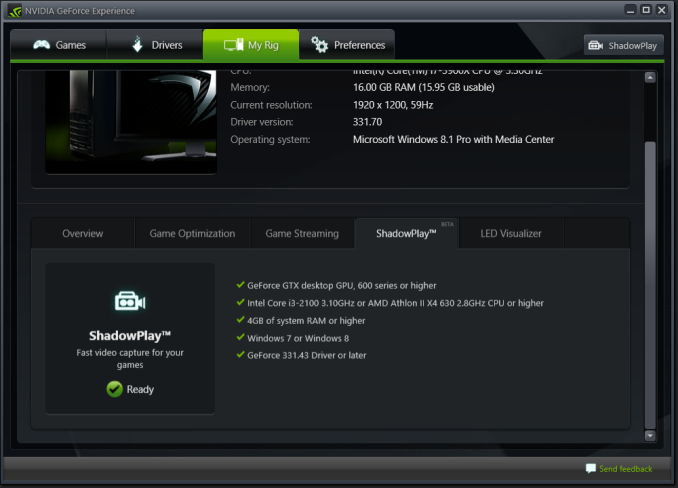
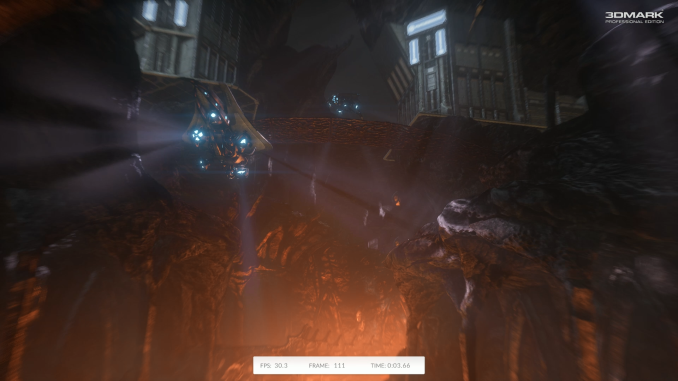

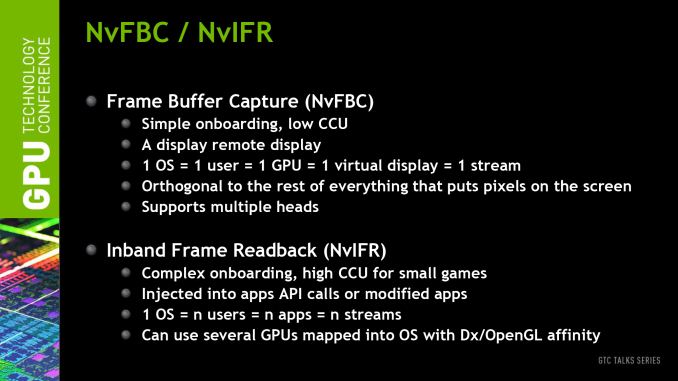














302 Comments
View All Comments
fewafwwaefwa - Thursday, November 7, 2013 - link
sterven..althaz - Thursday, November 7, 2013 - link
G-Sync a game-changer, seriously? I admit to not having seen it in action, but it seems like a small advantage at best and something nobody in the whole world has a monitor that supports it at worst.MonkeyM - Sunday, November 10, 2013 - link
780 isn't nearly as overprice as the ti. It's 500 now, not 650. Which, in all honesty, is a pretty fair price for a card that draw almost 70 watts less than the 290 or 290x. Badly overpriced? False. Overpriced? That's more than fair for the Ti, but a bit of a stretch for the 780. Meagre gain is also bullshit. You get the last 3 missing SMX's, an extra 1,000Mhz on the GDDR5's clock, and you also get a sizable 576 more stream processors. Other than those, it's a fair comment. I do wish they would feel the need to drop prices more, but you certainly get consistency when you buy from big green...Da W - Thursday, November 7, 2013 - link
Hey look, an Nvidia Fanboy! So happy to get a few framerate advantage like if he owned the company or worked for it.WHO GIVES A DAMN?
At the end of the day i'm looking at performance/price/temperature/noise. That being said, living in Canada, every degree of heat my videocard produce, i save in heating bill.
euskalzabe - Thursday, November 7, 2013 - link
hahahaha... I totally understand, that is one of the reasons I still keep my GTX470: the heat it provides during cold Chicago winters is a plus until I move elsewhere next year and buy a 8xx Maxwell :)EzioAs - Thursday, November 7, 2013 - link
The GTX 780ti is also quite power hungry and loud and you would know that if you read the reviewWreckage - Thursday, November 7, 2013 - link
I'm guessing you ignored the "uber mode" setting for the 290x, it is off the charts compared to the 780ti.Nothing I said in my above post is wrong. I think it's the truth that is upsetting people.
EzioAs - Thursday, November 7, 2013 - link
You also didn't clarify that it was the Uber mode...and it is still one the charts.Without the "uber mode", the 290X is still quite close to the GTX 780ti in terms of gaming performance, power consumption and noise.
TheJian - Thursday, November 7, 2013 - link
You must not be reading anywhere but here, and even then, 290x isn't close:Oddly Anandtech doesn’t seem to know it has special tech in it that allows better OCing – power balancing (unbalancing?). You guys not using it or something? :)
http://www.bit-tech.net/hardware/graphics/2013/11/...
“A new power management feature for the GTX 780 Ti related to clock speeds and overclocking in particular is called Power Balancing. A card like the GTX 780 Ti draws power across three rails: the PCI-Express lane and the two additional PCI-E power connections. Power is balanced between the three but can become unbalanced when overclocking and possibly limit your overclocks if you max out one rail while having headroom elsewhere. Power Balancing simply allows the balance to be maintained when overclocking, potentially allowing for higher overclocks than previous GK110 cards, on top of the already higher clock speeds.”
They only hit 1152, but in practice saw it hitting 1230. Mem hit 1950!
http://www.guru3d.com/articles_pages/geforce_gtx_7...
More on power balancing. They hit 1276 boost 7948mem.
http://www.legitreviews.com/nvidia-geforce-gtx-780...
1289 OC/1900 mem
https://www.youtube.com/watch?v=m1JOhT015ww
Linustechtips, as always both cards Oc’ed to the wall. He mentions Over 1200 core (not sure if that’s base or boost). But as you can see when both 780ti/290x are clocked to max 780ti dominates everything. Benchmarks at 8:35 or so. Also note Luke says 1080p will still be tough in upcoming games like star citizen etc as he shows. Pretty much a landslide by 15-25% “crushing everything” Luke says. He actually discusses 1080p and shows Farcry 3 (55avg, 290x hits 47avg)/Crysis 3 (50fps vs. 40fps 290x) maxed not hitting above 55fps and at 2560 shows they don’t even hit 30fps avg and this is OC’ed to the max and already kicking the crap out of AMD here (24fps crysis3 for 290x max oc’ed). So if you like to MAX everything in your game, these both are not even playable in crysis 3 or farcry3 at 2560 and many other games. You will constantly be turning stuff down at 1600p, so not quite sure how anyone can say these cards are overkill for 1080p when as he notes games like star citizen will no doubt slow you down even more than Crysis 3 (same engine, later game, well duh). You’ll need 20nm to max 2560 or always run things on low, medium etc like anandtech does. You can play there but with how many sacrifices?
http://www.overclockersclub.com/reviews/nvidia_gtx...
1304 OC/1940 mem
Note also these guys show the quiet mode dropped 290x to 669mhz!
While Anandtech still uses very few games and a useless warhead game:
Games 780 wins or dominates in 2560 ALL vs. UBER 290x (of course all worse for quiet mode, note bit-tech only does 1080p and 5760):
Skyrim (bit-tech w/hires texture packs, techpowerup without)
Assassins Creed 3 (techpowerup, 5.3%)
SplinterCell Blacklist (techpowerup, blows away 690, crushes UBER 36%, also same shown at overclockersclub even 5760)
Battlefield 3 (techpowerup, legitreviews, overclockersclub 1080/5760)
Battlefield 4 (bit-tech, but barely, same 1080p, tweaktown shows big loss? But guru3d shows big win@2xMSAA…LOL – guru3d shows losses below)
Batman Arkham City (overclockersclub at both 1080/5760)
Tombraider (legitreviews, techpowerup, tweaktown etc)
WOW Mysts of Pandaria (techpowerup, over 25% faster, over 20% 5760)
StarCraft 2 HOS (techpowerup, over 15%, beat 690 too)
Diablo 3 (techpowerup, over 15%, 20% in 1080p also)
COD Black Ops 2 (techpowerup 17%, again over 22% in 1080p also)
Sleeping Dogs (techpowerup)
Crysis 3 (techpowerup, bit-tech)
Bioshock Infinite (Techpowerup, bit-tech etc – everyone I guess)
Phantasy Star online 2 (tweaktown, 17%+, even beats 1065mhz OC 290x)
Lost Planet 2 (tweaktown, over 34%! Same vs. 1065mhz 290x, same 1080p)
F1 2012 (tweaktown, beats 1065mhz 290x also, all resolutions)
Dirt Showdown (tweaktown tie 2560, but wins 1200p/1680x1050)
Far Cry2 (tweaktown, anyone play this? Still they show it over 10% NV)
Guild Wars 2 (techreport, dominated by old 780, so 780ti will be better)
Medal of Honor Warfighter (guru3d 17%).
Maybe there's a reason anandtech has chosen their games? Still waiting for the NVIDIA PORTAL.
The point here? Gsync, GeforceExp, Physx, Cuda, streaming, shadowplay, lower noise, power, heat, 3 AAA games, massive OCing and all the games above with some major victories (BEFORE and overclock). This is without mentioning all the driver issues, including AMD admitting they have a current problem with “VARIANCE” with 290/290x and will fix that with a driver supposedly in response to Tomshardware article, Techreport etc about retails perf being lower than press cards. For anyone thinking $700 is a rip-off, I suggest you look at the numbers/features above. On top you need a new fan or wait for better models before I'd even touch 290x/290 due to noise.
Only disappointment I can see as a buyer, is no full DP. Titan still has that and 6GB, though nobody can show a game using more than 3GB and run into the problem while being OVER 30fps. To force this into a problem (not sure you can, skyrim modded out?), you will be CRAWLING in fps.
Galidou - Thursday, November 7, 2013 - link
Wow dude, hardcore fan or working for nvidia or I don't know, took the time to find every link, type that to make us realise this: nvidia's reference cooler is amazing like before, we know how GTX 780 ti pushed to the max performs(i don't think custom coolers will go much past 1300mhz on the core), 290x reference cooler is crap(like we didn't already know) and for that we still don't know how it performs pushed to the max.Oh and maybe YOU didn't chose your games for comparison... And yes it is close, from your carefully handpicked games it's averaging 15-20% faster while costing 28% more.
700$ is not a ripoff for totl performance but still too much for 99.8% of us(pc gamers that still use 1080p monitors).
For the 3gb argument, did you travel in the future, 2 years from now if the games will never use more? Skyrim with a couple mods goes close to 2gb in 1080p!! Heavily modded over 2gb easily.i'm right now on the limit of mods with my GTX 660 ti 2gb, sometimes it suffers from a little lack of memory...